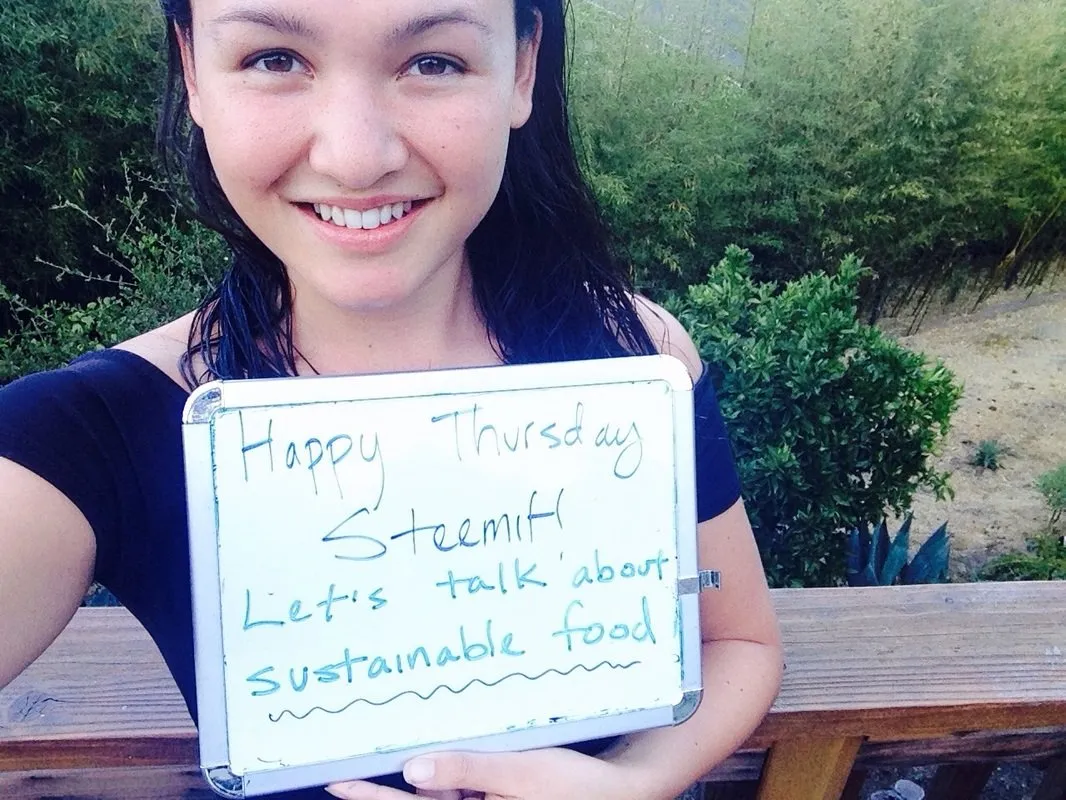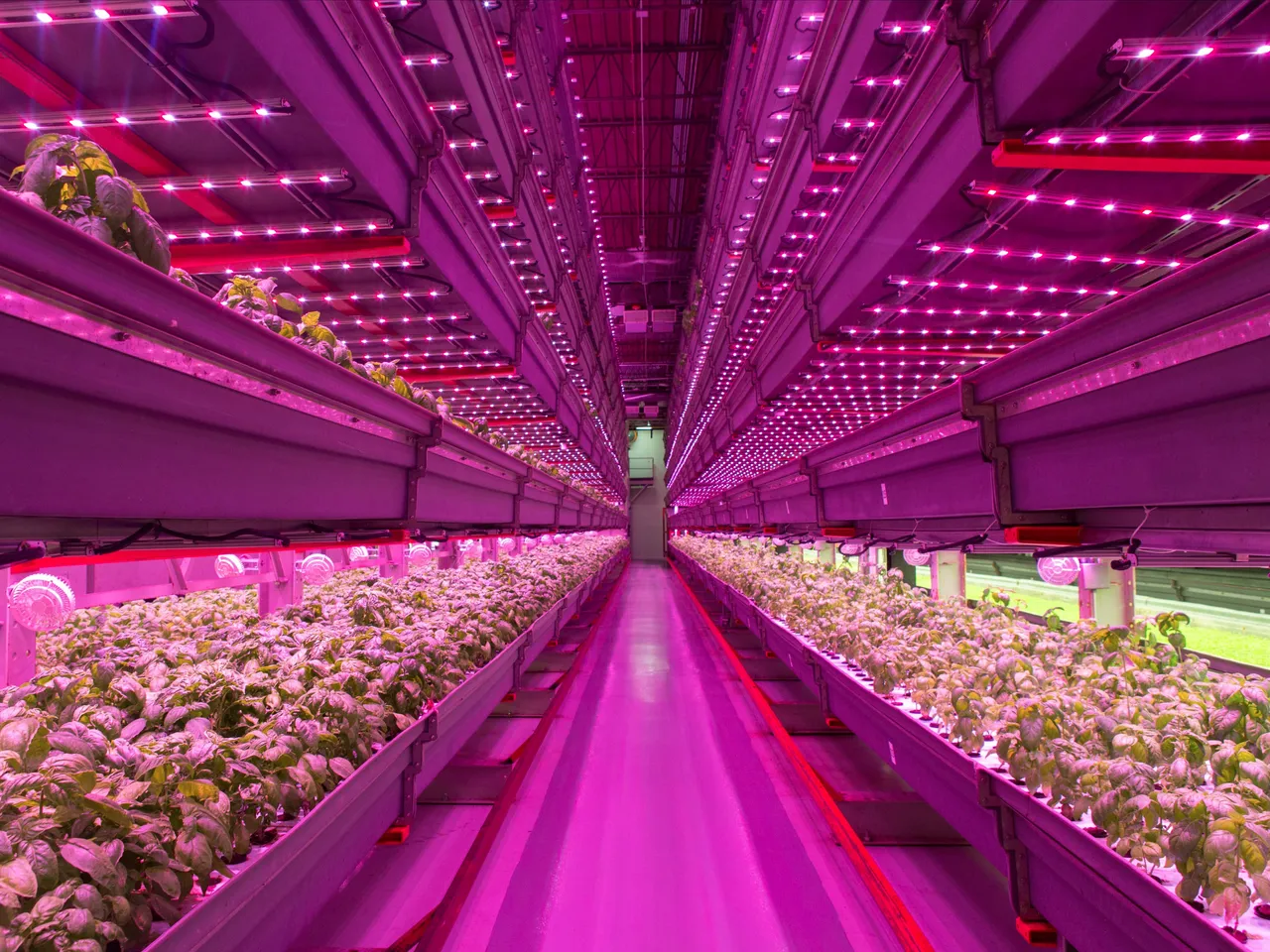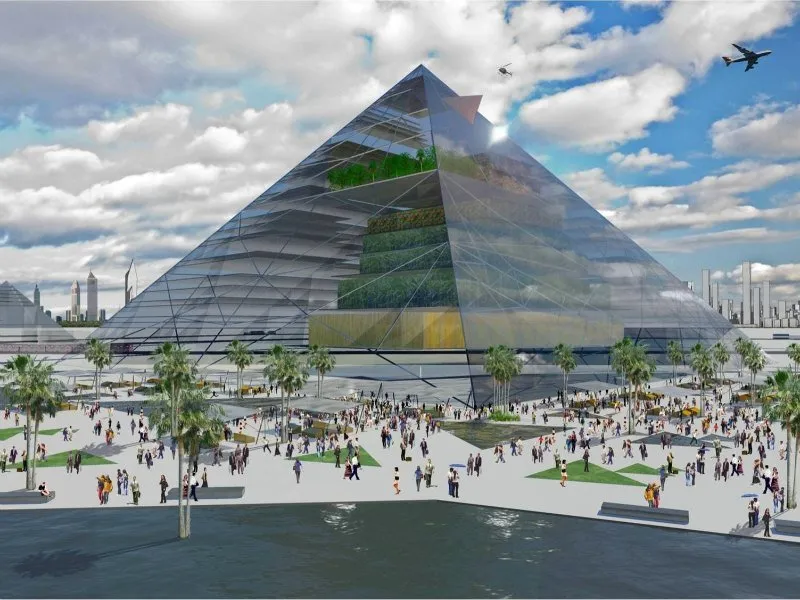
Advances in farming over thousands of years have steadily allowed for stable population growth. From a world population of 1 billion in 1806 to a population of over 7 billion people today, it is clear that population growth is happening along an increasingly steep curve. The UN estimates that the world's population will surpass 9 billion people by 2050. While we have managed to keep pace with food production, we are quickly depleting our farming resources. This is where the idea of vertical farming comes into play.
The Idea
Vertical farming is exactly what it sounds like: farming done in closed environments that grow upwards instead of outwards. This has taken the form of skyscraper greenhouses.

Advantages
The advantages to this form of farming seem readily apparent.
Since they grow upwards instead of outwards, they are about as efficient as possible per square acre.
It eliminates the need to turn previously unused land into new farmland.
As vertical farms are closed environments, they can be built anywhere and thus allows for gross reduction in the need for shipping produce. This in turn reduces transportation costs, as well as the negative environmental side effects of current shipping practices.
The closed and hydroponic nature of vertical farms means they grow produce very efficiently.
Vertical farms use only about 10% as much water as that required for traditional outdoor farming, and 20% less than conventional hydroponics as frequently used in greenhouses.
It also means that all food can be organic. In such a tightly controlled environment pesticides, sprays, and herbicides become unnecessary.
As the plants are grown under artificial lighting, energy absorption can be optimized.
It allows for the repurposing of old and unused buildings, optimizing the use of urban spaces.

Disadvantages
Vertical farms tackle the issue of food production, but food processing is another step that is necessary for a large number of the products we consume. In order to truly scale down on transportation costs as I had mentioned above, it would also be necessary to move food processing plants closer to cities.
Since these vertical farms make it difficult to reliably use natural sunlight, most products will need to be grown using artificial lighting. All the models created so far have been run on LED lightbulbs, which tend to run (at least for now) on the expensive side. Further, researchers have suggested that it would require unreasonable amounts of energy to run such lighting year round if we desired to truly replace our traditional farming methods with vertical farms.

Deeper Issues
While the concept of vertical farming is an alluring one, some researchers argue that vertical farming only functions as a bandaid to the deeper problems of food supply and distribution.
As of 2015, as much as 40% of produce grown in the country is never sold because it does not meet aesthetic standards set by the industry. If there is a small blemish or bruise on produce, it is simply discarded as unusable.
We function in a system where global food scarcity is more of an issue of geopolitics than it is of actual scarcity. The fact that large portions of the globe are incredibly food scarce while other portions (like the US) have the freedom to throw away almost half of what it produces points to the fact that producing more food will not solve world food issues.

Conclusion
There are very clear and tangible benefits to implementing vertical farming, including the facts that it can be built anywhere, can grow almost anything, and have very high food yields compared to traditional methods of farming. I feel that the main energy issue barring the ability to make widespread use of vertical farming is something that will only take a matter of time to solve, as we develop and refine forms of renewable energy to be more and more efficient. However, it is important to take these positives with a grain of salt and to remember that vertical farming, while highly promising, will not be the solution global hunger.
As mentioned above, it is vital to look at the politics behind hunger. Often hunger is due to distribution problems rather than supply shortages. As stated in a 2008 report by the United Nations Conference on Trade and Development and United Nations Environment Programme, titled Organic Agriculture and Food Security in Africa, food security is not based on food supply but rather “what is important is who produces the food, who has access to the technology and knowledge to produce it, and who has the purchasing power to acquire it”. The issue of supply versus distribution of food will be covered in a future post. I hope you've enjoyed this post, happy Thursday!
Sources
http://www.verticalfarm.com/?page_id=36
http://www.verticalfarms.com.au/advantages-vertical-farming
http://www.newsweek.com/2015/10/30/feed-humankind-we-need-farms-future-today-385933.html
http://www.ecowatch.com/5-ways-vertical-farms-are-changing-the-way-we-grow-food-1882019986.html
http://okaywhatever.com/wordpress/the-pros-and-cons-of-vertical-farming/
http://www.newsweek.com/2015/10/30/feed-humankind-we-need-farms-future-today-385933.html
UNEP and UNCTAD 2008 Organic agriculture and food security in Africa. UNEPUNCTAD : Capacity-building task force on trade, environment and development.